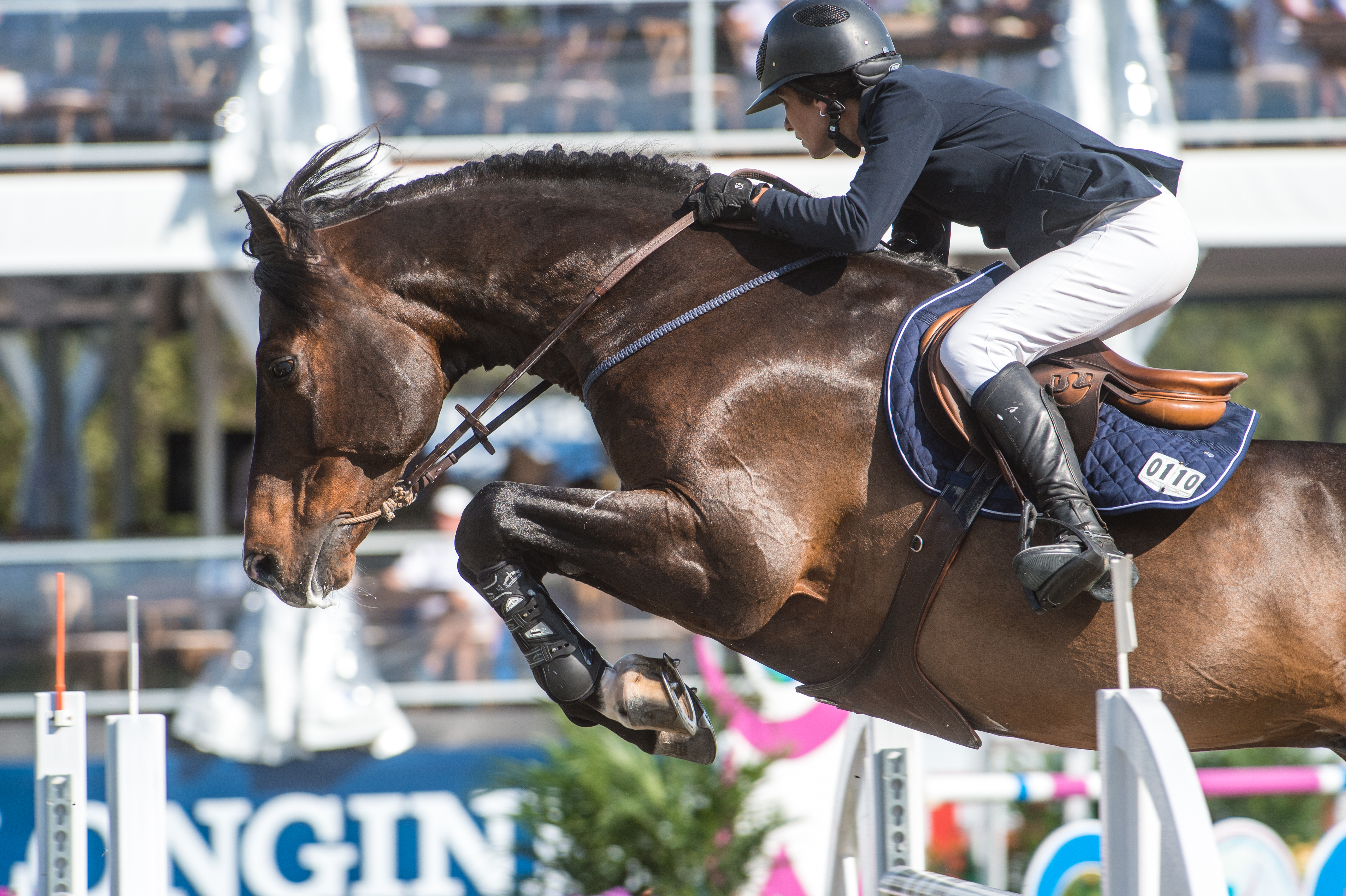
In a sport where riders are known for experimenting with all kinds of tack, 32-year-old grand prix jumper Lauren Tisbo still manages to surprise crowds when she enters the show ring. Two of her horses compete in a racehorse exercise saddle and one shows in a bridle with no headstall, often described as an Indian or war bridle. “I’m a firm believer that you’re going to get the most out of a happy horse,” she explains. “I guess some people might say I go to extremes.”
Standing sixth in the Longines FEI World Cup Jumping North American Eastern Sub-League at press time with one qualifier left, Lauren agrees with the common wisdom that elite-level horses are invariably quirky. “Part of the fun of the sport is figuring out those quirks and finding the right key that makes horses go as well as they can go.”
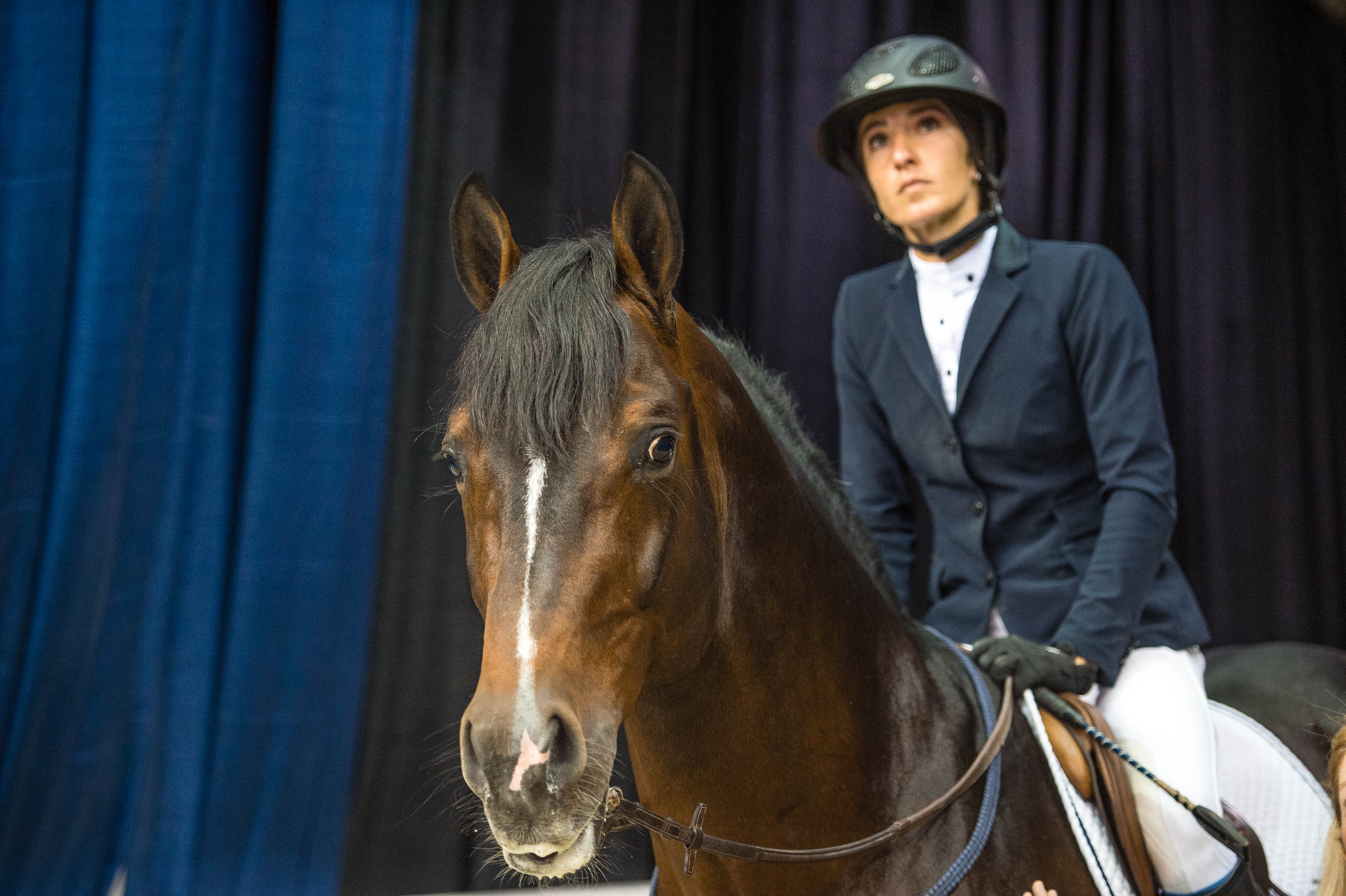
Doing things unconventionally has been somewhat of a theme for this successful rider, who grew up in Barrington, Illinois. Unlike many top jumpers, she didn’t start her career in the equitation and hunter rings. A horsey friend sparked her interest in riding early. Her parents bought her an Appendix Quarter Horse named Okie Dokie when she was 12. She remembers, “He was really green and nothing fancy. I had to get a ladder to bridle him because he was a little bit ornery.”
But Lauren’s greatest passion as a child and teenager was soccer. “I was on high school and travel teams, ran indoor track to get fit for soccer and spent time in the gym.” This left very little time for riding, so Okie Dokie became a pasture pet for several years. By Lauren’s junior year of high school, though, soccer had become more work and less fun. She decided to quit and turn her attention back to horses.
She moved Okie Dokie to Katie Kappler’s stable and soon realized that he wasn’t cut out for the show world, so she sold him as a trail horse. Lauren, on the other hand, was hooked. “I did some of the hunters that first year, but I instantly fell in love with the jumpers.” Her parents generously supplied her with horses to ride while she attended Lake Forest College, which didn’t have an equestrian team but was only an hour away from Katie’s barn. Since then, many top trainers, including John and Beezie Madden, Katie Prudent, Eric Lamaze, Candace King and Anthony D’Ambrosio, have helped Lauren to progress to world-class level.
Paul O’Shea, a grand prix rider from Ireland who assisted Lauren in finding both of the stallions in her string, says, “She’s a very gutsy rider. She definitely thinks outside the box. She’s not afraid to try something to see if it works.” But he also attributes her success to good stable management. “It’s very important to her that the horses are really well taken care of and very healthy. She really pays attention to the little details. She’s a very hard worker. It’s nice to see her do well.”
The Value of Your Bond
One of the things Lauren learned along the way was the value of bonding with her horses. “I’m all hands-on. I can clip, I can plait [braid], I can pull shoes. To me, it’s really important to know how to take care of your horse. If you’re not in there mucking his stall once in a while, you won’t learn his personality or behaviors.”
This strategy paid off with an extremely talented, yet quirky, Oldenburg mare named La Centa, nicknamed Penny. “She was quite nervous at the in-gate. When I first got her, she wanted nothing to do with it! Using my legs, spurs or stick didn’t help—and getting a groom to lead her in didn’t work either. She would back away and try to rear up.”
Lauren experimented with many different strategies to help Penny overcome this problem before she found one that worked. “Once we finished our school, I would keep her busy working on the flat until it was our turn. Then I would just continue trotting—or cantering—right into the ring.”
Penny also had such an aversion to jumping open water and liverpools that she sometimes even refused regular fences that were located close to a water jump. In 2014, Lauren spent several months at John Whittaker’s barn in England. While in Europe, she entered Penny in a 1.50-meter class in Munich. The first fence was right next to an open water. “She let me know that she didn’t like that. After the first attempt, where I didn’t even get to break the start timers, I decided this wasn’t in her best interest and pulled up.”
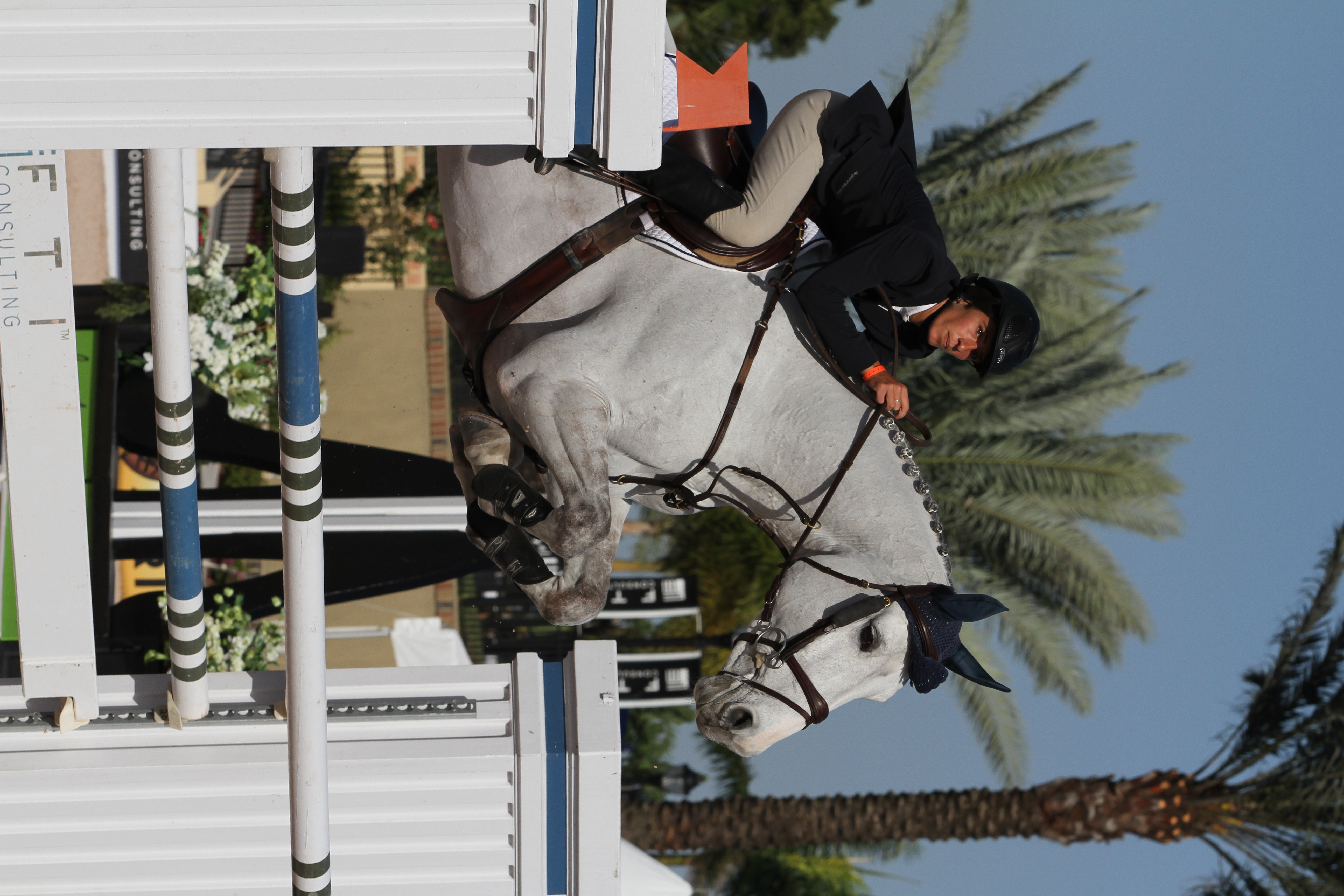
The only class left on the schedule was a 6-bar, in which riders tackle a straight line of four jumps in a row, separated by two strides each. The fences are raised after each round of clear rides. Lauren hadn’t prepared for the class, but she wanted another chance to get Penny in the ring. “I gave it a shot—and she ended up winning, clearing 1.85 meters.” The next week they tied to win another 6-bar in Wiesbaden, Germany, breaking the show record in the process by clearing 2.05 meters.
Although Lauren never solved Penny’s problem with open water, she did overcome her aversion to liverpools by schooling her daily over many variations of them at home. By the end of the mare’s career, she was jumping liverpools confidently.
“Sometimes when horses have issues or weaknesses you just have to find out how to play to their strengths,” says Lauren, who admired the mare’s talent so much that she kept her on as a broodmare. This spring, Penny is expecting her first foal by King Kolibri, another of Lauren’s successful retired jumpers.
The Racehorse Saddle
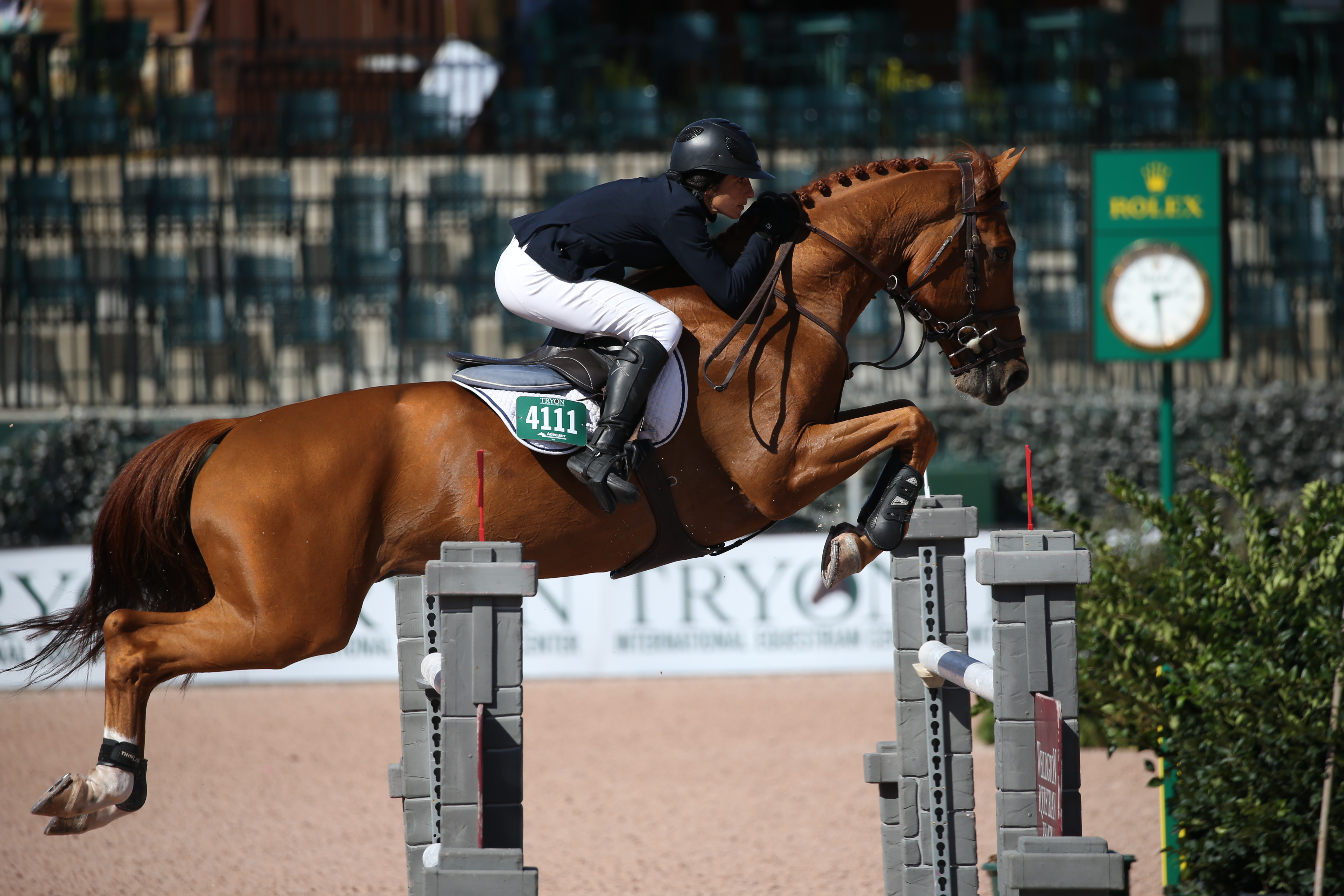
Another mare who came through Lauren’s barn was very difficult to fit a saddle to because of her prominent withers and wide shoulders. “If the saddle was too tight on her shoulders, she’d cross-canter all the time. If it pinched her withers, she was like a runaway train. It affected her reaction to pressure on the bit, too. She was resentful of it and uncooperative.”
A friend suggested that Lauren try a racehorse exercise saddle on the mare. Not quite as small as an actual racing saddle, it has very short flaps, no panels and a half tree made of aluminum. “The tree is a U-shape at the withers and where the stirrup bars attach. The rest of it is totally flexible. There is no need to worry about panels not fitting flat on the horse’s back or the gullet being too wide or narrow for the spine.”
The mare made a remarkable transformation in this saddle and her training problems disappeared. “Her back really changed: She developed a lot of muscle across her back and her topline changed significantly.” Lauren was so impressed that she tried the saddle on another horse with back issues. He, too, showed dramatic improvement. She now schools all of her horses in the saddle at home and competes two of her top horses, Coriandolo Di Ribano, also known as Rocky, and Brindis Bogiobo, in it.
Jumping in the saddle “felt weird the first time, but I got used to it really quickly. I actually feel the most comfortable in that saddle now. It’s so soft and you’re a lot closer to the horse. You can feel everything—if a horse is straining in his back or not pushing off as well with one hindquarter versus the other. I also feel like I have a better position in it than in a regular saddle.”
Free Longeing
Lauren has always tried to make schooling at home fun for her horses, explaining, “It’s not all about making them do whatever you ask them to do exactly when you ask them to do it. I think there’s more to it than that.” One of her now retired horses, Roundthorn Madios, followed her around the ring like a big pet after rides, she says. “I’d get off him and run in zig-zags. I would start running and he would start trotting. And then I would stop and he would stop.”
This game evolved into the free longing method she now practices with some of her show string. For example, with Rocky, a Sella Italiano stallion, she used free longeing to teach voice commands for downward transitions. “He gets a little bit mouthy in his transitions. I now go from the canter to the trot just by saying ‘trot.’”
She credits free longeing and the exercise saddle for helping Rocky, who is just 10 this year, progress rapidly to the top of the sport. “He was really like a first-year grand prix horse when we got him a year ago. I knew that he was a special horse and was going to jump the biggest grands prix, but I did not think it was going to happen within six months of having him! With most horses, it’s usually a little up and down as you’re bringing them along. He just figured it out overnight.”
Last year, Rocky and Lauren won the $100,000 Hudson Valley Jumper Classic at HITS on the Hudson and placed third in the $216,000 Longines FEI World Cup™ Jumping New York CSI****W, competing for the American Gold Cup at Old Salem, New York, and the $380,000 CSI***** Rolex Grand Prix FEI in Tryon, North Carolina. “For a 9-year-old horse to get that kind of results, it’s unusual,” says Paul. “He’s a really special horse and they have a great connection.”
The War Bridle
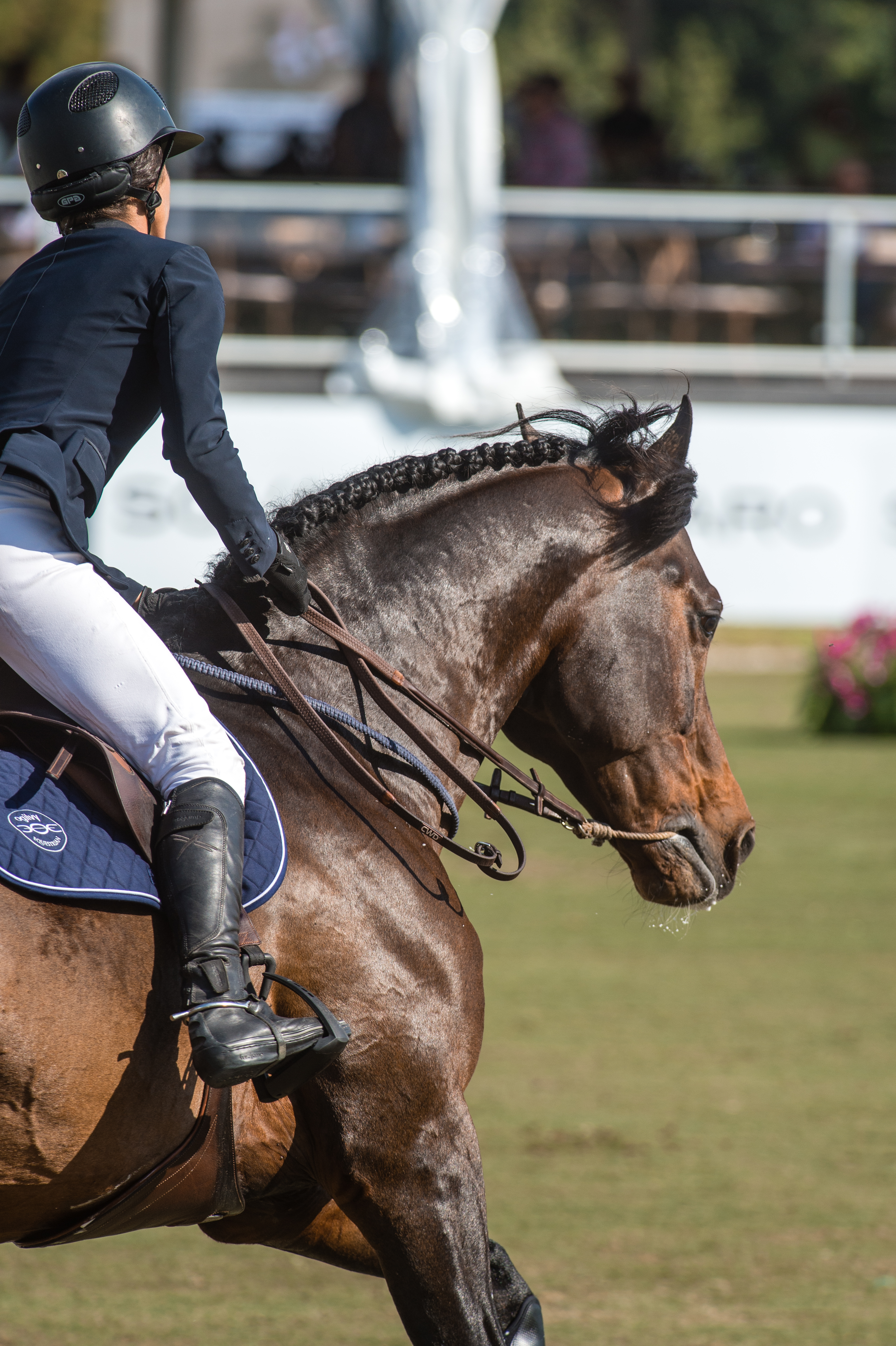
A different tack experiment benefited Lauren’s other talented stallion, a 12-year-old Holsteiner named Mr. Visto, also known as Vinnie. (“I love mares,” says Lauren with a laugh. “I don’t know how I keep ending up with stallions.”) When he came to her barn, his previous owner sent along the bits she’d used with him. But Lauren still had trouble controlling him. “He doesn’t have a bad mouth, but he is strong. When he doesn’t like what you’re doing, not only does he pull down, but he wrings his head from side to side and up and down. He hit me in the face at least once or twice just in protest when I was trying to shorten him on course. And he’s not a horse that wants a lot of contact. He wants you to let him be.”
Lauren tried countless different bits on Vinnie to no avail. Finally, a friend suggested that she try a war bridle, which is simply a loop of rawhide rope attached to a piece of cotton rope and two metal rings. Regular reins are attached to the rings. You slip the top of the rawhide loop into the horse’s mouth just as you would a normal bit. Then you tighten the cotton rope underneath his lower jaw to adjust the fit. The “bit” rests on the horse’s tongue. “It is strong, but it’s only as strong as you make it,” says Lauren, who found that it allowed her to ride Vinnie with much lighter contact. “When I’m flatting him or coming up to a jump, I don’t have very much contact unless I need to shorten his stride.”
Vinnie responded immediately to the war bridle. “He’s so much happier in it. His form is better and his whole expression changes—his eye looks softer and he’s more enthusiastic. I was so excited I tried it on every horse in my stable.”
Riding other horses in the bridle at home helped Lauren adjust to the different steering technique required. Unlike conventional bridles, whose reins attach to the bit on either side of the horse’s face, the reins on a war bridle connect to the same place on the rope under the horse’s jaw. “You have to teach them to turn from their shoulder more which, technically, is how a horse is supposed to turn. They’re not supposed to turn by bending their necks.”
To facilitate steering, she uses a rope around the horse’s neck in a manner similar to neck-reining. “I was told to use the rope to guide his neck when he’d get stuck in the turns so he could understand what I was asking for.” Vinnie figured it out quickly, she says. “I don’t think I’ve ever used the rope around his neck on a course.”
Paul agrees that Vinnie seems happier in the war bridle. But, he adds with a laugh, “I think I’d be nervous myself, riding in it.”
Most of Lauren’s other horses responded to the bit as if it were just a normal snaffle. She has found it helpful, however, in improving rideability in some cases. For example, her 6-year-old homebred, Graffiti Boy, who will show in the Young Jumpers this year, responded very well to it. “He was testing me last summer; he didn’t want to listen to me. I rode him in the bridle for a couple of weeks. It was like a switch went off in his head.” After that, she went back to riding Graffiti Boy in a conventional bridle.
Now based in Wellington, Florida, Lauren continues to explore ways to improve her bond with each horse she rides. “The stronger bond you have with your horse and the more things you can do to keep him happy and interested in learning and working, the better he’ll go for you.”
This article was originally published in the April 2017 issue of Practical Horseman.










